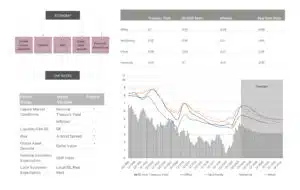Trump Miami Development Approval: A Transformative Step for Doral Real Estate
The recent Trump Miami development approval by the Doral City Council has set the stage for one of the most ambitious luxury real estate projects in South Florida. With plans to construct 1,500 high-end condominiums and 142,000 square feet of commercial space, this development is poised to reshape the landscape of the Trump National Doral Miami property.
As analysts at Ironsides Group, led by our visionary CEO Andre Granello, we explore the potential economic, social, and investment implications of this groundbreaking project.
The Scope of the Trump Miami development approval
The Doral Council’s approval paves the way for a phased development spanning 56.4 acres of the Trump National Doral Miami property. This space, previously used for parking lots, will now host luxury condos priced upwards of $2 million and a series of townhouses set along the golf course. Sales are expected to commence by mid-2025, and the project promises to elevate the area’s reputation as a premier residential and commercial hub.
Why the Trump Miami Development Approval Matters
Economic Growth in Doral
This development aligns with broader trends in U.S. real estate, as discussed in our report, U.S. Real Estate Market Outlook 2024 by CBRE. The project will undoubtedly attract high-net-worth individuals, bolstering the local economy and driving demand for luxury retail and dining options. The inclusion of 142,000 square feet of commercial space ensures that the project will cater to the needs of an affluent clientele while contributing to job creation in the retail and hospitality sectors.
Enhanced Investment Opportunities
Investors are keenly watching this development due to its strategic location and potential returns. In light of our analysis on A Strategic Quadrant Approach to Commercial Real Estate Investing, the Trump Miami development aligns perfectly with high-demand markets for luxury real estate and mixed-use properties.
The Phased Development Plan
Phase One: Setting the Standard for Luxury
The first phase of the Trump Miami development will introduce approximately 300 condos. Each unit will feature state-of-the-art design, top-tier amenities, and unparalleled access to the renowned Trump National Doral Miami golf course. As outlined in our services page, Ironsides Group’s expertise in brokerage and capital markets can provide tailored investment strategies for those interested in this development.
Townhouses and Retail Expansion
Complementing the condos are townhouses designed to redefine modern living standards. These properties, nestled along the golf course, offer exclusivity and luxury at its finest. The addition of high-end retail outlets and fine dining establishments mirrors trends we analyzed in Luxury Retailers Opting to Buy Iconic Buildings for Flagship Stores.
Addressing Challenges: From Initial Plans to Final Approval
Initially, the project proposed over 2,200 residential units. However, following revisions and community input, the approved plan reduced this number, balancing urban development with environmental considerations. As analysts, we see this as a strategic compromise that enhances long-term sustainability while still maximizing profitability.
Broader Economic Context
The approval comes during a period of economic flux, as highlighted in our blog, U.S. Slower GDP Growth: Unraveling the Impact of Fed Rate Hikes. Despite macroeconomic challenges, the luxury real estate sector continues to thrive, with projects like Trump Miami leading the way.
AI’s Role in Real Estate Development
At Ironsides Group, we recognize the transformative power of technology in modern real estate. Our insights from AI’s Impact on Healthcare Real Estate reveal how AI-driven analytics can optimize project planning, marketing, and sales. The Trump Miami development could leverage similar technologies to ensure efficient execution and targeted marketing to high-net-worth individuals.
Strategic Implications for Investors
Diversifying Portfolios
Luxury developments like this provide investors with opportunities to diversify their portfolios. Our expertise in capital markets ensures that we can help clients navigate such high-stakes investments.
Navigating Market Dynamics
As we explored in Barry Sternlicht’s Analysis of Federal Reserve Rate Cuts, understanding the interplay of economic policy and real estate trends is crucial. Projects like Trump Miami offer resilience in uncertain markets, making them attractive to strategic investors.
Why Choose Ironsides Group for Real Estate Insights
At Ironsides Group, we offer a full suite of services, from brokerage to cutting-edge technology solutions. With a proven track record in analyzing and facilitating high-profile projects, we are uniquely positioned to guide investors through opportunities like the Trump Miami development. Learn more about our projects and how we deliver value to our clients.
Conclusion: The Future of Doral and Beyond
The Trump Miami development approval signifies a pivotal moment for Doral’s real estate market. As this ambitious project unfolds, it will undoubtedly redefine luxury living and set new benchmarks for mixed-use developments. At Ironsides Group, led by Andre Granello, we are committed to providing unparalleled insights and strategies for investors looking to capitalize on transformative opportunities.
To learn more about how we can help you navigate this dynamic market, visit our contact page.










